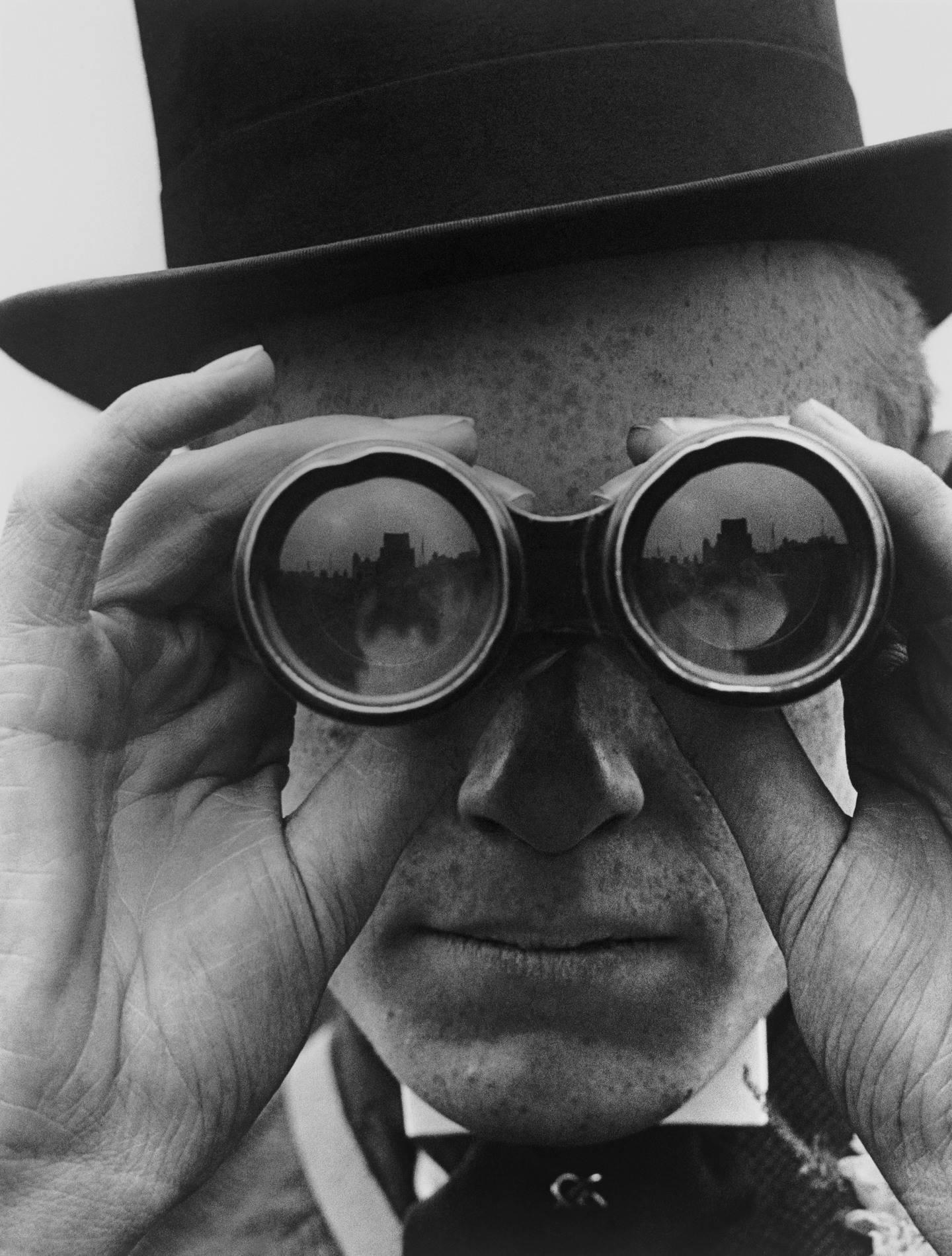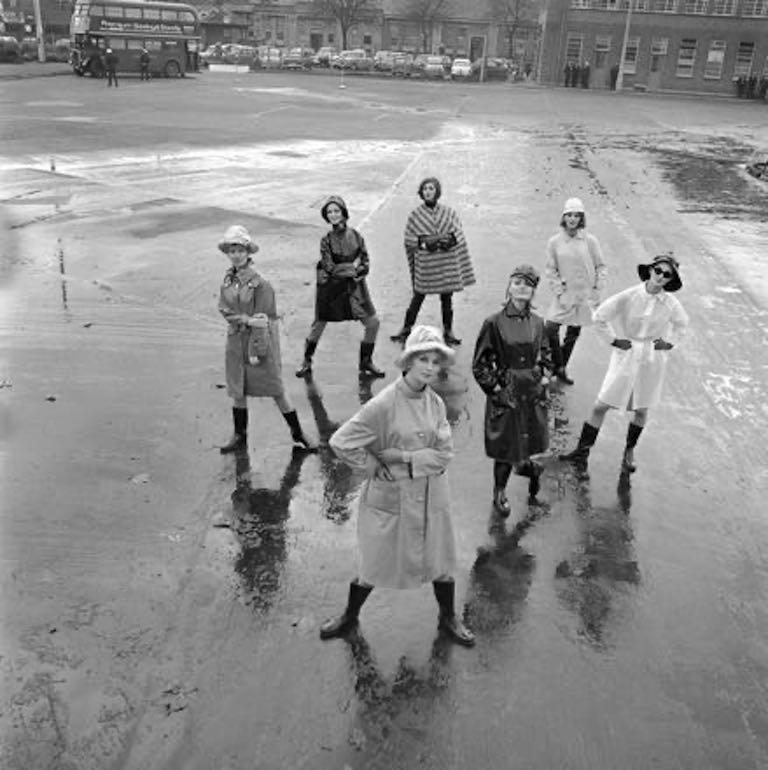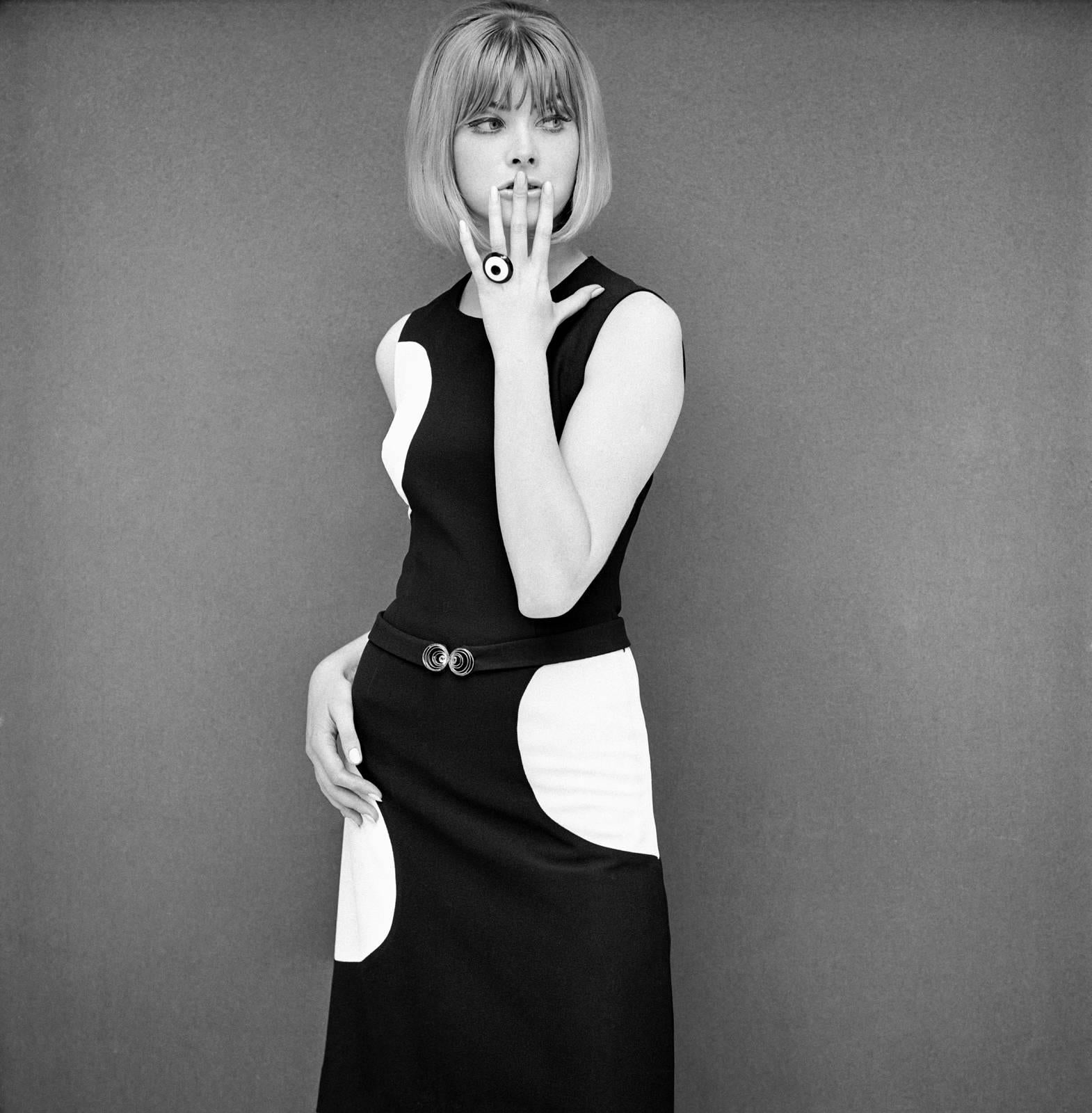Items Similar to Vintage Signed Silver Gelatin Photograph Chabad Shul Pletzl Paris Judaica Photo
Want more images or videos?
Request additional images or videos from the seller
1 of 5
Nathan LernerVintage Signed Silver Gelatin Photograph Chabad Shul Pletzl Paris Judaica Photoc.1970
c.1970
About the Item
17 Rue des Rosiers Paris, France.
A small Shul in the old Jewish quarter of Paris (the Pletzel), known as the ‘Zibetzin’, located at 17 Rue De Rosiers, The Lubavitcher Rebbe was known to have frequented the ‘Zibetzin’ Shul for learning and Davening when he resided in Paris prior to and during WWII. (three of his predecessors, earlier Chabad Rebbes, are also said to have prayed there). Similar to Frederic Brenner, Roman Vishniac and Micha Bar Am this is a sensitive study of Jewish life in Europe.
Nathan Lerner (1913–1997) was an influential Chicago photographer whose work helped define his city. The New York Times wrote that his work "was inextricably bound up in the history of visual culture in Chicago" He was Henry Darger's landlord and discovered Darger's work shortly before his death.
Mr. Lerner's long career was inextricably bound up in the history of visual culture in Chicago. Born in 1913 to immigrants from Ukraine, he began studying painting at the Art Institute of Chicago at the age of 16, taking up the camera to perfect his compositional skills. When Lerner was 18 years old he left to study with Samuel Ostrovsky, a Russian-French, post-impressionist painter, who was interested in expressing light. At 22 he began doing a kind of photojournalism, developing his well-known series on ''Maxwell Street,'' an immigrant neighborhood hit hard by the Depression, and also photographing the southern Illinois mining area. In 1937 Archipenko, the well-known sculptor, recommended the New Bauhaus school to Lerner. Archipenko had moved to Chicago to teach at the New Bauhaus, which was under the direction of Laszlo Moholy-Nagy. Lerner became one of its first scholarship students and turned increasingly to photographic experimentation. He began making semi-abstract, strongly Constructivist images involving luminous projections, solarization, photograms and other methods. Lerner invented the first light box which allowed photographers to create abstract studies of objects and light. The light box is mentioned by Moholy-Nagy in The New Vision (1939) and reproduced by Gropius in his Bauhaus 1914-1928 catalogue for the Modern Museum of New York (1938).In 1939 he became the assistant of Gyorgy Kepes, head of the school's light workshop; together, they wrote ''The Creative Use of Light'' (1941). With Charles Niedringhaus in 1942 he developed a machine for forming plywood that was used in making most of the school's furniture.
After working as a civilian light expert for the Navy in New York during World War II, Mr. Lerner returned to the school, now called the Institute of Design, and was named education director by Walter Gropius after Moholy-Nagy's death in 1946. He left in 1949, opening a design office that became nationally known for its furniture, building systems and glass and plastic containers (including bottles for Revlon and Neutrogena and the Honeybear honey container).
From 1966 to 1977, Lerner taught as a distinguished professor of design philosophy at the University of Illinois. While throughout his life he had pursued photography as an art form, during this period he primarily concentrated on creating graphic abstractions and working with color enlargements for the first time, as did many other major photographers such as Ansel Adams, Walker Evans and Harry Callahan, late in their own careers.
In 1968 Mr. Lerner married Kiyoko Asia, a classical pianist from Japan, and over the next two decades made numerous trips to Japan, where he took his first color photographs, as well as Mexico. He had his first solo exhibition of photography in 1973 and thereafter exhibited regularly in galleries and museums in the United States, Europe and Japan. His work is included in photography and design collections around the world.
Mr. Lerner will also be remembered as the man who discovered and helped to preserve the art of Henry Darger, one of the century's great outsider artists, whose work is currently the subject of a retrospective at the Museum of American Folk Art in Manhattan. Mr. Lerner knew Darger only as an idiosyncratic recluse who rented a room in an old rooming house on Chicago's then-neglected North Side, which he bought in 1953 largely to prevent its destruction. After Darger's death in 1972, Mr. Lerner found that the room was crammed with Darger's fantastical writings and paintings and arranged for them to be exhibited.
- Creator:Nathan Lerner (1913 - 1997)
- Creation Year:c.1970
- Dimensions:Height: 10 in (25.4 cm)Width: 8 in (20.32 cm)
- Medium:
- Movement & Style:
- Period:
- Condition:this has been recently matted.
- Gallery Location:Surfside, FL
- Reference Number:1stDibs: LU38214369262
About the Seller
4.9
Platinum Seller
These expertly vetted sellers are 1stDibs' most experienced sellers and are rated highest by our customers.
Established in 1995
1stDibs seller since 2014
1,565 sales on 1stDibs
Typical response time: 1 hour
- ShippingRetrieving quote...Ships From: Surfside, FL
- Return PolicyA return for this item may be initiated within 3 days of delivery.
More From This SellerView All
- Vintage Street Photography Bruce Cratsley Photo Silver Gelatin Print PhotographBy Bruce CratsleyLocated in Surfside, FLBruce Cratsley, American (1944-1998) Vintage gelatin silver print Lifting Hand (Scot) Chez Moi A surrealist image of a hand with a light study Hand signed, titled and dated 1986-1988 verso image (each): 15 1/4 x 15 1/4 inches, matted to 24 X 20 inches Provenance: From the collection of AGFA Graphics Corporation David Bruce Cratsley (1944 - 1998) was an American photographer specialized in still lifes, portraits of friends, and life in New York City. He had a reputation of master of light and shadow. Bruce Cratsley attended Swarthmore College, graduating in 1966, and then, in the early 1970s, The New School for Social Research, studying under Lisette Model. Cratsley worked for many years as a gallerist at Marlborough Gallery before quitting in 1986 to become a full-time photographer. As "Bruce Cratsley", he exhibited in various New York galleries, like: Laurence Miller Gallery, Howard Greenberg Gallery and Witkin Gallery. Cratsley was represented by Yancey Richardson Gallery, a dealer of fine art photography based in SoHo. He was photographed by Elsa Dorfman...Category
1980s American Modern Figurative Photography
MaterialsSilver Gelatin
- Vintage Silver Gelatin Print Photo Israel Museum Sculpture Jerusalem PhotographLocated in Surfside, FLSusan Hacker -Israel Museum, Sculpture Garden, Jerusalem, Israel, 1979 Silver Gelatin black/white photograph, printed in 1983, hand signed, titled (Jerusalem) and noted. There is no edition size stated Location (Jerusalem), shoot date (1979) and photo print date (1983) and signature in pencil on the bottom back of the photograph. This is of the sculpture Woman skipping rope by Luciano Minguzzi located in the Isamu Noguchi designed sculpture garden at the Israel Museum Image size: 22 x 33 cm Paper size: 28 x 35.5 cm Susan Hacker (1949) is an American photographer and author. She developed and expanded the photography department at Webster University in St. Louis. Her work is in the possession of at least 25 major museums and libraries around the world. There are also many books and publications about her. Has always experimented with many photographic techniques. Hacker is recognized as an innovator of the modern photography art. Susan Hacker Stang (born Susan Hacker, October 19, 1949) is an American photographer, author, and educator. Stang served on the faculty of communications at Webster University in St. Louis from 1974 through 2015 and now holds the title Professor Emeritus. She helped found and build the respected photography program there, heading it for most of her tenure at the university. Her work has been collected by more than 25 major museums and libraries around the world and appears in half a dozen books and numerous magazines. Much of her photography involves the innovative use of alternative cameras, formats, techniques, and media, as evidenced by her two books Encountering Florence (featuring subtly surreal black and white prints of the Italian city using 8 x 10 Polaroid emulsion transfers) and Kodachrome – End of the Run: Photographs from the Final Batches (which chronicles a six-month university photography project in which students and staff would shoot more than 100 roles of rare Kodachrome film for processing on the last day of operations by the world's last remaining Kodachrome processing lab.) In 2016, she published a book of photographs, reAPPEARANCES, which is a sequence of fifty-two photographs made with a digital toy camera (the JOCO VX5). The volume purports to take the viewer on a visual journey through the uncanny coherence of the look of the world, according to Stang's introductory essay. Stang majored in photography at the Rhode Island School of Design, where she earned both a BFA (1971) and MFA (1974), and studied under photographers Harry Callahan and Aaron Siskind. In 1971 she moved to London where she worked as a photographer for the British fashion magazine NOVA (published 1965–1975). She joined the faculty of Webster University in St. Louis in 1974, where she helped found and build the photographic studies program in the School of Communications. In Jerusalem in 1979 she was Artist-In-Residence at the Bezalel Academy of Arts and Design. In recent years, in addition to her work as head of the Webster University photography program and professor of communications, she has taught summer photography workshops in Florence, Italy, both at the Santa Reparata International School of Art (SRISA) and The Darkroom. She taught at Webster for 41 years and earned the Kemper Award for Excellence in Teaching. Stang's photography characteristically employs alternative cameras (such as the Olympus Pen-FT half-frame camera, the Kodak Brownie, and the Holga), or alternative formats (such as Polaroid emulsion transfers) and techniques. Her book of Polaroid emulsion transfers, Encountering Florence was published simultaneously in the U.S. and in Italy (under the title Firenze un Incontro) in 2007. Stang's use of the emulsion transfer process involves transferring the fragile, fabric-like emulsion layer of the photograph (bearing the image) to another surface, subtly transforming the original image in a variety of ways. The results were described in Photo Review as giving Stang's portraits of Florence's buildings, streets, statuary, and gardens "a delicate, draping quality ... reminiscent of the fabrics draped on the ancient statues within the images". An Italian reviewer observed that the photographic process presents "a city not previously seen and perhaps a little disquieting". The book's bi-lingual text in English and Italian was selected and edited by Stang and by Andrea Burzi and Susanna Sarti, both of Florence, to present accompanying word-portraits from authors in their own encounters with the city. A portfolio of Stang's work for the book is held by the Rare Books Collection of the Biblioteca Nazionale Centrale Firenze. In 2010–11, Stang led the Webster University photography program in a six-month-long focus on the color reproduction qualities of Kodachrome film (long revered by professional and amateur photographer for its true, lush color rendition qualities) to mark the permanent discontinuing of the film's production by Kodak. The project ultimately turned into a book documenting the final demise of the medium, and the last day of Kodachrome production anywhere in the world (at Dwayne's Photo in Parsons, Kansas, on January 18, 2011). The last days of processing were covered by The New York Times, National Geographic, and network television. Edited by Stang and fellow photographer Bill Barrett, Kodachrome: End of the Run presents a selection of four-score Kodachrome images shot on more than 100 roles of the film by Webster University students, faculty, and staff over a five-month period and processed by Dwayne's in the final hours as the last processing chemicals ran out. The book includes essays by Stang, Time Magazine worldwide pictures editor Arnold Drapkin, and Dwayne's Photo vice president Grant...Category
1970s American Modern Black and White Photography
MaterialsSilver Gelatin, Photographic Paper
- Vintage Signed Silver Gelatin Photograph Dapper Lord Snowdon Photo Suit & TieBy Fred McDarrahLocated in Surfside, FLLord Snowdon Over a 50-year span, McDarrah documented the rise of the Beat Generation, the city’s postmodern art movement, its off-off-Broadway actors, troubadours, politicians, agi...Category
1960s American Modern Black and White Photography
MaterialsSilver Gelatin
- Vintage Signed Silver Gelatin Photograph Jasper Johns Exhibit Photo Whitney MusBy Fred McDarrahLocated in Surfside, FLMercedes and Herbert Matter at Jasper Johns Exhibition nov 21 1978 Whitney Museum photographer Fred McDarrah Over a 50-year span, McDarrah documented the rise of the Beat Generatio...Category
1970s American Modern Black and White Photography
MaterialsSilver Gelatin
- Vintage Signed Silver Gelatin Photograph Paul Georges Studio Painting PhotoBy Fred McDarrahLocated in Surfside, FLPaul Georges with Painting Jan 6, 1967 Photographer is Fred McDarrah Over a 50-year span, McDarrah documented the rise of the Beat Generation, the city’s postmodern art movement, i...Category
1960s American Modern Black and White Photography
MaterialsSilver Gelatin
- Large Vintage Print Silver Gelatin Signed Photograph Greenwich Village New YorkBy Fred McDarrahLocated in Surfside, FLA rare black and white photograph of the famous 10th street coffee house gallery in NYC which served as the center of the art, poetry and music scene during the 1960's and 70's, attracting the likes of Andy Warhol, John Chamberlin...Category
1960s American Modern Black and White Photography
MaterialsBlack and White, Silver Gelatin
You May Also Like
- 'Derby Spectator' Limited Edition Oversize Silver Gelatin PrintLocated in London, GBDerby Spectator A spectator looking through binoculars at the Derby horse races, Epsom, Surrey, June 1923. (Photo by Hulton / Getty Archive) Silver gelatin fibre print 20 x 24" p...Category
1920s Modern Figurative Photography
MaterialsSilver Gelatin
- Young Competitors (1925) - Silver Gelatin Fibre PrintLocated in London, GBYoung Competitors (1925) - Silver Gelatin Fibre Print (Photo by MacGregor/Topical Press Agency/Getty Images) 11th August 1925 Three young competitors arriving at the courts for th...Category
1920s Modern Figurative Photography
MaterialsBlack and White, Silver Gelatin
- ' The Wet Set ' Oversize Limited Edition - Victoria and Albert Museum LondonBy John FrenchLocated in London, GB' The Wet Set ' Oversize Limited Edition Print 1963 - Victoria and Albert Museum, London By John French The Wet Set, John French (1907-66), London, 1963 © Victoria and Albert Museu...Category
1960s Modern Figurative Photography
MaterialsBlack and White, Silver Gelatin
- 'Strapless Shrimp' V&A Portfolio Fashion Photography Limited Edition printBy John FrenchLocated in London, GB'Strapless Shrimp' V & A Portfolio Limited Edition print Jean Shrimpton modelling jewellery for ‘Voice & Vision’, John French (1907-66), London, 1963 © Victoria and Alber...Category
1960s Modern Figurative Photography
MaterialsSilver Gelatin
- 'London Dress' V&A Portfolio Fashion Photography Limited EditionBy John FrenchLocated in London, GB'London Dress' V&A Portfolio Limited Edition print A model wearing an op-art dress and bullseye ring, John French (1907-66), London, 1965 © Victo...Category
1960s Modern Figurative Photography
MaterialsSilver Gelatin
- [The Circle] LaSalle Street, HarlemBy Todd WebbLocated in New York, NYGelatin silver print Stamped in black ink, verso This artwork is offered by CLAMP, located in New York City. Todd Webb (1905-2000) was an American photogra...Category
1940s American Modern Black and White Photography
MaterialsSilver Gelatin
Recently Viewed
View AllMore Ways To Browse
Used Black Furniture
Used Furniture White
Used White Furniture
Vintage White Furniture
Black And White Vintage Furniture
Retro School Furniture
Found Photos Vintage
Modern Gropius
Graphic Design Black White
Ukrainian Vintage
Black Man In Paris
Chicago City Photos
Charles White Artist
Vintage Light Box Sign
Vintage Light Box Signs
Asian Vintage Black Bar
Chicago Jewish
Vintage Learning





![[The Circle] LaSalle Street, Harlem](https://a.1stdibscdn.com/todd-webb-photography-the-circle-lasalle-street-harlem-for-sale/a_9323/1550688013316/Webb_The_Circle_La_Salle_at_Amsterdam_980_master.jpg)